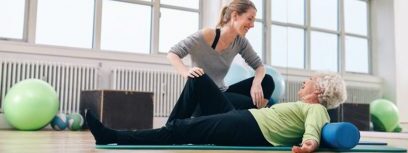Stroke occurs when a part of the brain does not receive sufficient blood or due to the rupture of blood vessels in brain causing leakage in the brain. A person who survives stroke has to undergo severe neurological deficits and alterations in level of consciousness and other impairments as well. The outcome of stroke is usually devastating.
Other than medical, pharmacological, and neurosurgical management of stroke, post-stroke rehabilitation plays a pivotal role in promoting the independence of movement. Complications related to stroke can be significantly decreased or prevented. The quality of life is improved notably as the patient can perform his daily life activities without depending on a family member, servant, or nurse.
Rehabilitation programme includes prevention of further strokes and overcoming the loss caused by a cerebrovascular accident. Deficits caused by the stroke can be reversed as it is a non-progressive disease in nature.
PHYSIOTHERAPY AND REHABILITATION MANAGEMENT
Gaining movement
In post-stroke rehabilitation, recovery is usually speedy during initial few months and movement patterns are re-educated in a hierarchal way in most patients. Re-education is utmost important in achieving mobilisation in the patient. Re-education activity needs the cooperation of each person coming in contact with the patient.
Effective breathing
Physiotherapy plays an important role in re-training appropriate breathing patterns. Proper breathing patterns may also help patients with other activities such as speech, swallowing, feeding etc. It may help to calm the patient from frustrating and exhausting exercise programmes and repeated unsuccessful attempts of movements.
Strengthening
Increasing muscular ability is important to generate force. Once the patient learns to perform movements, he is required to perform all activities actively and takes passive resistance as well. It prepares the patient to take stress on muscles and on joints. The person will be able to perform activities such as self-helping a glass of water and feeding himself.
Ambulating the patient
This step comes after the re-education of muscles is done. The patient is now able to move and perform gait training which further helps to strengthen weak muscles of the back, lower extremity, and gain consciousness of self and environment. Extra care should be taken as the change in posture may cause hypertension and vertigo. A mobile patient can be more self-reliant as he will be able to visit washroom on his own and perform other activities around the house.
Long term goals
Once the patient is able to do movements on his own, he can be prescribed exercises which he can do at home or increase speed to gain endurance. Long term rehabilitation helps to avoid the weakness of muscles and restores the power of the extremities.

